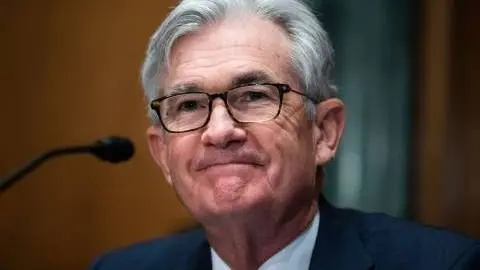Inflation nears target in CEE region but central banks remain unsatisfied
While inflation in the region has made great progress, it's still not enough for central banks. But cutting rates is complicated, and the picture is not entirely clear. Economies should begin to recover, although the external picture is not entirely supportive
Poland: Gearing up for recovery
According to the flash estimate, Poland's economy grew by 0.2% in 2023, following a GDP expansion of 5.3% in 2022. The recovery started in mid-2023 but then lost steam in the fourth quarter due to weaker consumption and sluggish production and exports. The data suggests that GDP grew by only 1% year-on-year in the fourth quarter vs 0.5% YoY in the third quarter of 2023. We estimate that household consumption was stagnant, while fixed investment continued its solid growth. We still expect that sound real income growth coupled with the marked improvement in consumer sentiment should translate into increased consumer outlays, but we are still not expecting a repeat of the consumption boom that we have seen in the last few years. Against the backdrop of weak external demand, we count on domestic consumption to be the main driver of economic growth in 2024. Investment continues to maintain a solid pace.
The Statistics Office revised December CPI inflation to 6.2% YoY from an earlier estimate of 6.1% YoY. CPI may fall close to the 2.5% YoY National Bank of Poland (NBP) target in the first quarter. The short-term inflation outlook looks favourable, with the headline CPI in the first quarter expected to be within the range of acceptable fluctuations around the NBP target (2.5%, +/- one percentage point). This is due to a combination of factors. Firstly, there is the high reference base from last year when, among other things, the basic VAT rates on electricity, gas, heat and fuels were restored following a temporary lowering. Secondly, the government has extended the freeze on household energy prices (electricity, gas, heating) until the end of June 2024 and zero VAT on food until the end of March this year.
The Monetary Policy Council's (MPC) reaction function has changed since the October elections from ultra dovish to neutral. The reasons mentioned by the NBP were the temporary nature of the CPI decline in the first quarter and the inflation outlook for higher CPI in the second half of the year. NBP Governor Adam Glapiński assessed that the 'inflation overhang' due to continued interventions in energy prices and lower VAT on food is around five percentage points. Full withdrawal of anti-inflation measures would immediately boost annual CPI by that amount. Therefore, in our view, the MPC will leave interest rates unchanged at least until May (the main rate at 5.75%), and will assess potential actions in the second half of 2024 after reviewing the next macroeconomic projection.
We expect the zloty to extend gains in 2024, with target levels around EUR/PLN 4.20-25. The market is still pricing aggressive NBP rate cuts – which we think are unlikely to materialise. On top of that, we expect gradual inflows of foreign capital – both private capital, i.e., the foreign share in Polish government bonds (POLGB), which is still half as high as in other CEE countries, and public funds (EU). Poland should also maintain a current account surplus. However, the conflict in Ukraine remains the key risk for the zloty and the uncertain MPC reaction function is the main worry for inflows into POLGBs.
The recent series of successful POLGB auctions and higher coverage of the record 2024 borrowing needs finally started to translate into the secondary market developments. 10-year bonds are still attractive, so we may soon see higher inflows from abroad. The late first quarter still remains a major risk. Investors are betting on the MPC resuming the easing cycle alongside the new projections. Recent MPC comments indicate the easing is unlikely to happen quite so soon. This should lift the interest rate swaps and POLGB curves.
Czech Republic: Time for the central bank to pick up the pace
The economy grew by 0.2% quarter-on-quarter in the fourth quarter of last year, the highest figure since mid-2022 – but clearly not something to celebrate. The main driver is still foreign demand, while domestic demand is recovering only very slowly, if at all. This year we expect a 1.4% recovery on average but still the weakest growth in the CEE region. More success is seen on the inflation and fiscal policy side. Headline and core inflation are still surprising to the downside with 6.9% and 3.6% respectively in December. The significant base effect will come into play in January, which we believe will lead to headline inflation of 2.7% year-on-year. The risks here are significant due to the strong seasonality in January in the Czech Republic, but the headline rate will very likely be by far the lowest in the CEE region.
The budget ended last year slightly better than the Ministry of Finance projected and the January numbers confirm that fiscal policy consolidation is in process. We expect the deficit to be slightly lower than planned this year as well. We therefore forecast a decline from 3.5% of GDP to 2.5% this year. The Czech National Bank cut rates for the first time by 25bp to 6.75% last December. We expect the central bank to continue cutting rates throughout this year. For the February meeting, we expect the cutting pace to accelerate to 50bp thanks to the CNB's new forecast, which should confirm our positive view on inflation.
After two years, the Czech koruna approached 25.00 EUR/CZK, mainly due to the market's growing bets on central bank rate cuts. We expect a peak in EUR/CZK in February and then the koruna should start appreciating again. The economy should recover later this year and FX should be supported by the current account surplus, which is already showing a strong recovery. We therefore expect 24.50 EUR/CZK by mid-year.
Romania: Not ready to cut rates yet
Economic growth is likely to accelerate in 2024 as private consumption is making a comeback, likely overtaking investments as the growth driver. That’s likely to put an end to the current account deficit correction witnessed in 2023, though we are not projecting a re-widening of the gap either. The sustainability of the current account deficit remains highly dependent on EU funds absorption, given that foreign direct investments only cover about a third of the deficit.
With the real wage growth getting close to double-digit territory, the inflation profile could prove stickier, especially in the services sector. After closing the year below expectations at 6.6%, we expect a relatively minor bump in January inflation, which should get back above 7.0%. Afterwards, a gradual descent to our estimated 4.7% by year-end should follow, though core inflation is likely to stick visibly higher than the headline for the entire year.
From a monetary policy perspective, we continue to expect that the National Bank of Romania (NBR) will officially begin its rate cutting cycle in May 2024, though April looks equally likely. We have a long-standing forecast for the key rate to reach 5.50% by the end of the year and, while we maintain this view, we also acknowledge that risks for a somewhat shorter cutting cycle have increased lately. One reason for this is the excess liquidity in the interbank market which reached a significant RON 44bn in December 2023, acting as a strong incentive for local banks to come up with lower rates for new loans and deposits. In our view, such levels of liquidity cannot go away anytime soon, and we might as well face a new permanent reality of the Romanian banking sector being structurally over-liquid. The lower the market pricing is, the less need for the NBR to cut rates. Stopping with the key rate around 6.00% in 2024 might therefore make sense as well.
Hungary: Flip the switch
At the end of 2023, we were bullish on Hungary. We saw a partial agreement between Budapest and Brussels, and we were hopeful that this would start to address the confidence issues. The National Bank of Hungary's (NBH) steady, cautious easing and rapid disinflation looked like an amazing combination for HUF carry. However, the recent shift in the tone of monetary policy and the increased unpredictability of economic policy have combined to produce a negative outcome; markets are no longer cheered up by the positive real interest rate environment. Add in pro-growth fiscal policy (at least pro-growth relative to the circumstances) and some red flags from the major rating agencies, and you have a challenging market environment. The icing on the proverbial cake is the geopolitical and political risks with the Red Sea conflict, the sovereignty bill, and Sweden's NATO access saga.
So, we flip the switch: optimism off. We now see EUR/HUF reaching 390 in the first quarter and 395 in the second. As there are also some positive factors (with some caveats), these can maintain some kind of balance and keep the forint in a relatively narrow range and away from breaking through 400 again. While disinflation is welcome, it will put all kinds of pressure on the central bank. Moreover, we see reflation in the second half of the year, with inflation coming back close to 6%. While we now see a lower mid-cycle terminal rate, we still believe in the need for positive real interest rates.
We therefore call for further easing in 75bp steps until a 50bp finishing touch in June, and then we see a lengthy pause at 6.50%. The slowly but surely inverting structure of economic activity does not bode well for the HUF either. With export activity seemingly struggling recently and domestic demand finding some footing – helped by the return of positive real wage growth and some economic policy measures to support investment activity – the favourable developments in external balances could reverse, reducing support for the local currency.
Download
Download article
8 February 2024
ING Monthly: Reasons to be cheerful, Part 3 This bundle contains {bundle_entries}{/bundle_entries} articlesThis publication has been prepared by ING solely for information purposes irrespective of a particular user's means, financial situation or investment objectives. The information does not constitute investment recommendation, and nor is it investment, legal or tax advice or an offer or solicitation to purchase or sell any financial instrument. Read more



